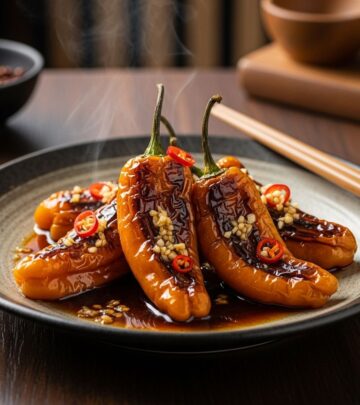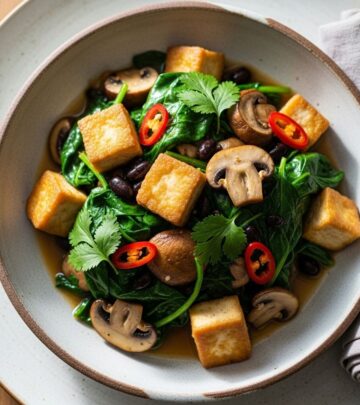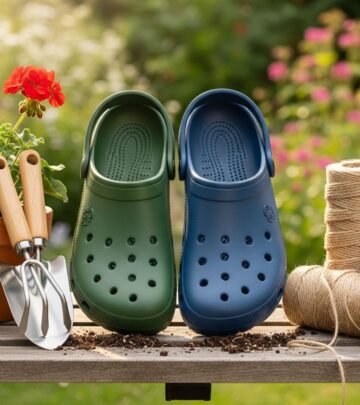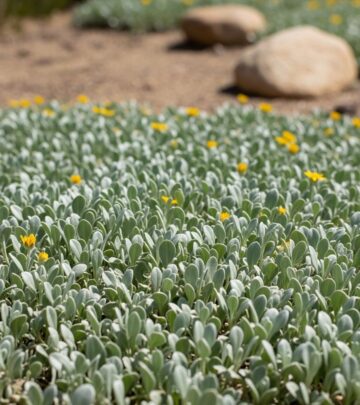Vegetable Garden Trellis Ideas: 5 Easy Designs To Save Space
Transform your vegetable patch into a lush, vertical paradise using arbors and trellises for structure, yield, and beauty.
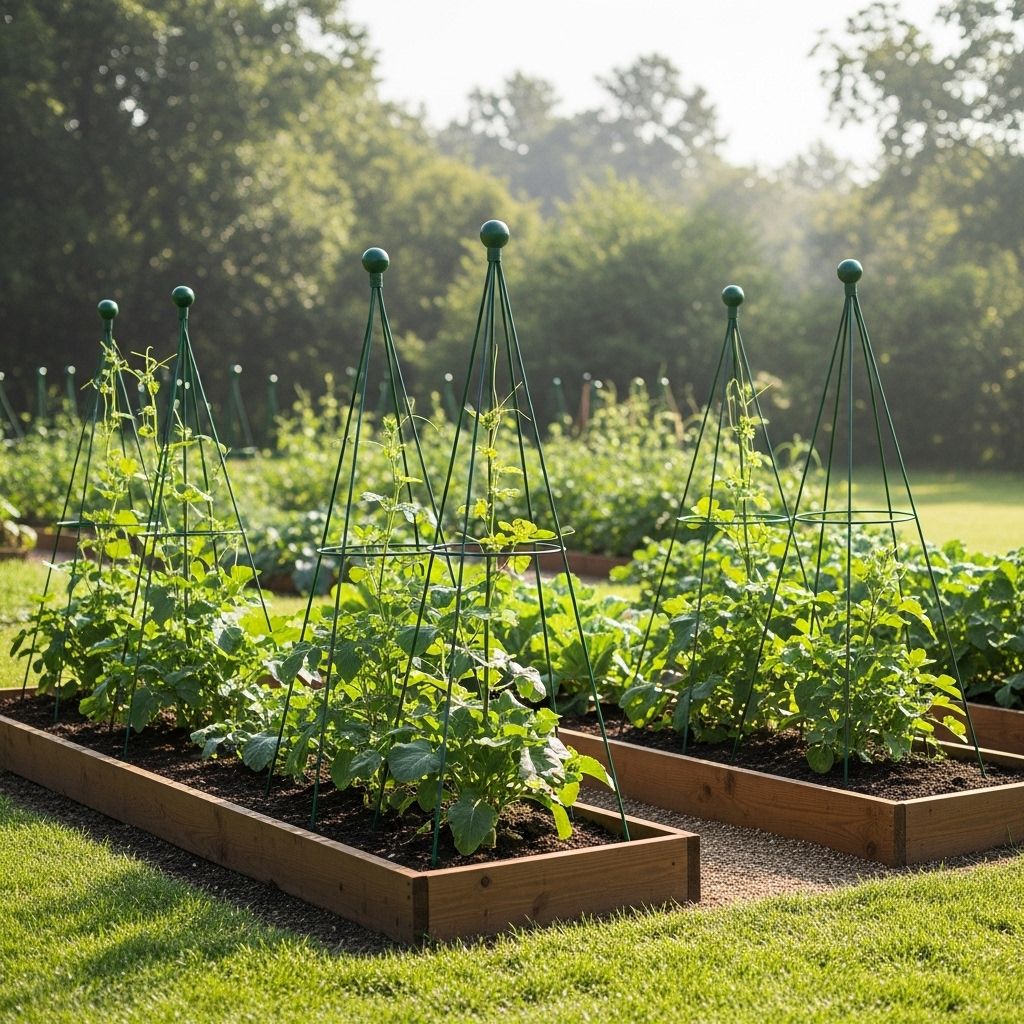
Image: HearthJunction Design Team
Arbors, Trellises, and the Edible Garden
Integrating arbors and trellises into your vegetable garden is one of the most transformative strategies for both maximizing space and elevating the aesthetics of your outdoor space. Far more than supports, these structures become living architecture—inviting vining edibles to reach new heights, optimizing productivity, and turning utilitarian rows into garden art. Let’s explore why and how these garden elements make a difference, discover creative designs, and learn the best crops to grow up towards the sky.
Benefits of Arbors and Trellises in the Vegetable Garden
- Space Efficiency: By growing vining crops vertically, you free up ground space for low-growing herbs and vegetables.
- Increased Sunlight Exposure: Elevating plants ensures they get more even light, resulting in healthier growth and bigger yields.
- Better Airflow: Keeping vines off the ground improves air circulation, decreasing the risk of mildew and pest infestations.
- Ease of Harvest: Fruits and vegetables dangling overhead are easier to see, pick, and keep clean.
- Visual Appeal: Arbors and trellises bring vertical interest, structure, and sometimes a sense of mystery to the garden, especially when used as gateways or focal points.
Why Grow Vertically?
Vegetable gardens often sprawl, but many edible plants naturally want to climb. Training crops like beans, peas, cucumbers, and squash to grow up instead of out harnesses their instincts and makes better use of limited space. Vertical gardening techniques help reduce soil-borne diseases, minimize slug and snail access, and make weeding and watering easier by concentrating plant growth in defined areas. For urban gardeners or those with small yards, vertical solutions are often the best way to increase productivity without expanding your footprint.
Choosing the Right Structure: Arbors vs. Trellises
| Feature | Arbors | Trellises |
|---|---|---|
| Definition | Freestanding or attached archway structures, often wide enough to walk under | Flat, lattice-like panels—can be standalone or attached to walls or raised beds |
| Main Uses | Define entrances, pathways, transitions; support for vigorous climbers | Maximize growing in beds; ideal for smaller vining plants |
| Visual Impact | Creates dramatic focal points and architectural interest | Provides background structure and organization |
| Typical Materials | Iron, wood, steel, PVC | Wood, metal, twine, string, wire panels |
| Plant Types | Great for large or heavy vines (squash, gourds, runner beans) | Best for peas, pole beans, cucumbers, tomatoes |
Key Considerations:
- Choose sturdy materials for heavy crops.
- Ensure the structure is anchored securely—especially if your area is prone to strong winds or heavy produce.
- Consider mobility: folding or removable trellises can be stored in off-seasons.
Creative Ideas for Arbors and Trellises
From simple DIY builds to ornate ironwork, there’s a style for every garden. Here are some inspiring ways to incorporate these structures into your edible landscape:
- A-Frame Trellis: Classic and practical, these simple wooden frames can be placed over beds for peas, beans, or cucumbers. Twine woven through slats gives tendrils more to wrap around. A bonus: A-frames can be folded and stored flat after the season ends.
- Archways: Position a series of arched trellises between raised beds or along garden paths. Not only do they support beans, gourds, and squashes—they also create a magical tunnel effect. In winter, arches can be covered with plastic to form a mini-greenhouse or protected walkway.
- Canopy Walkways: Use sturdy hog wire and T-posts to create overhead tunnels. This trick isn’t just for looks—the resulting shady canopy makes harvesting more comfortable during summer heat and allows even large, heavy fruits to hang safely.
- Recycled & DIY Solutions: Think outside the box with teepee frames made from bamboo, old ladders, or even upcycled bicycle wheels. Wire mesh, cattle panels, and old garden tools can all be repurposed into unique supports.
- Decorative Iron Arbors: While utilitarian at heart, many gardeners opt for elegant iron or steel arbors to double as ornaments and plant supports. These work especially well at garden entrances and can be underplanted with perennials for year-round interest.
Best Edible Plants for Arbors and Trellises
Many vegetables and even some fruits thrive when given something to climb. Here are some top choices for your supports:
- Pole Beans: Fast-growing and decorative, their long vines can quickly cloak a trellis or arbor, providing both food and shade.
- Cucumbers: While bush varieties exist, vining cucumbers produce better and stay cleaner when grown vertically.
- Peas: Sweet peas, sugar snap, and snow peas will happily scramble up netting or wires.
- Melons and Squash: Smaller varieties (like sugar baby watermelon or delicata squash) can be trellised; just support heavy fruit with slings.
- Tomatoes: Indeterminate varieties need active support as they grow—use strong, tall trellises or cages for best results.
- Malabar Spinach and Beans: Tropical, heat-loving, and excellent for vertical spaces.
- Climbing Herbs and Flowers: Nasturtiums, climbing spinach, and even edible gourds or passionflowers add color and attract pollinators.
How to Train and Maintain Vining Edibles
Planting vining vegetables and fruits under your arbor or along a trellis is the first step, but success requires regular attention. Here’s how to keep your vertical garden thriving:
- Plant Selection: Choose varieties that specifically mention “climbing” or “pole/vining” in their description.
- Initial Training: As the plants grow, gently guide the shoots towards the structure. Use soft ties or twine for support without damaging stems.
- Pruning: Remove excessive side shoots and damaged leaves to keep airflow high and prevent tangling.
- Slings for Heavy Fruit: For crops like melons or squash, make simple hammocks from old t-shirts, mesh, or pantyhose to cradle fruit and prevent breakage.
- Regular Inspection: Check regularly for pests, disease, or structural issues, addressing any problems promptly.
DIY Arbors and Trellis Projects
You don’t need to buy expensive structures. With some basic materials and a dash of creativity, you can build your own supports tailored to your garden’s needs and personality.
- Bamboo Teepee: Drive three to five bamboo canes into the ground in a circle, tie them at the top, and wind twine between them—perfect for beans or peas.
- Wooden Panel Trellis: Nail together wood laths or recycled pallet slats in a grid and secure upright beside your plants.
- Wire or Cattle Panel Arch: Bend a flexible livestock panel into an arch and fix the ends in the ground—robust enough for squash, pumpkins, or even grapes.
- Repurposed Items: Old ladders, fence posts, or metal headboards can become unique trellis features with a little ingenuity.
Incorporating Arbors and Trellises into Garden Design
Beyond practical benefits, a well-placed arbor or trellis becomes a visual anchor and transforms the personality of your edible landscape. Here are strategies to blend function and style:
- Frame Entrances and Exits: Use arbors to define the start or end of garden pathways for a sense of arrival or transition.
- Create Visual Pathways: Archways between raised beds draw the eye down the rows, while overhead structures give the garden height.
- Combine Edibles and Ornamentals: Train flowering vines alongside beans or cucumbers for a mixed tapestry of color, scent, and flavor.
- Seasonal Celebration: In winter, bare trelliswork becomes sculptural; in spring and summer, it’s draped in foliage and blossoms.
Tips for Success with Arbors and Trellises
To get the most from your vertical garden investments, follow these proven tips:
- Anchor supports deeply—aim for at least 12 inches into the ground, or concrete bases for heavy objects.
- Site structures so they don’t shade shorter, sun-loving crops unless intentional for summer cooling.
- Repaint or re-seal wooden arbors and trellises annually to extend their life and resist rot.
- Rotate crops each season to avoid disease build-up and deplete pest cycles.
- Consider irrigation—plants grown vertically may dry out faster and benefit from drip systems at the base.
Frequently Asked Questions (FAQs)
What’s the difference between an arbor and a trellis?
An arbor is a larger, often arched structure, typically used as a passage or entryway and suited to heavy climbers. A trellis is generally a flat, grid-like support structure for guiding vining plants vertically in beds or against walls.
Which vegetables are best for vertical gardening on trellises?
Pole beans, peas, cucumbers, indeterminate tomatoes, melons (with support), and smaller varieties of squash are top choices for trellises and arbors.
How do I prevent heavy fruits from breaking off the vine?
Support larger fruits like melons and squash with homemade slings made from fabric or netting, tying them to the trellis so the weight is off the vine.
Do arbors and trellises need maintenance?
Yes. Inspect each season for structural damage, repaint or reseal wood, and check that all supports are still anchored securely. Clear plant debris at the end of the season.
Can I grow flowers and edibles together on the same structure?
Absolutely! Mixing flowering vines like nasturtium or morning glories with beans or pole peas adds beauty, attracts pollinators, and increases biodiversity.
Conclusion: Reach New Heights in Your Edible Garden
Arbors and trellises are more than just practical supports—they are design elements that maximize yield, make harvesting easier, and bring elegance to the working vegetable plot. Whether you construct a DIY trellis from recycled materials or invest in a decorative iron arbor, the result is a garden that is both functional and beautiful, leading your edible ambitions up toward the sky.
References
- https://www.gardendesign.com/vegetables/arbors-trellises.html
- https://www.gardenary.com/blog/arch-trellis-ideas-for-the-vegetable-garden
- https://rootsandrefuge.com/how-to-grow-on-trellises/
- https://www.pinterest.com/pin/20-diy-arbor-and-trellis-ideas-for-your-garden–152840981089336046/
- https://www.bhg.com/vegetable-trellis-ideas-11700902
Read full bio of Srija Burman

